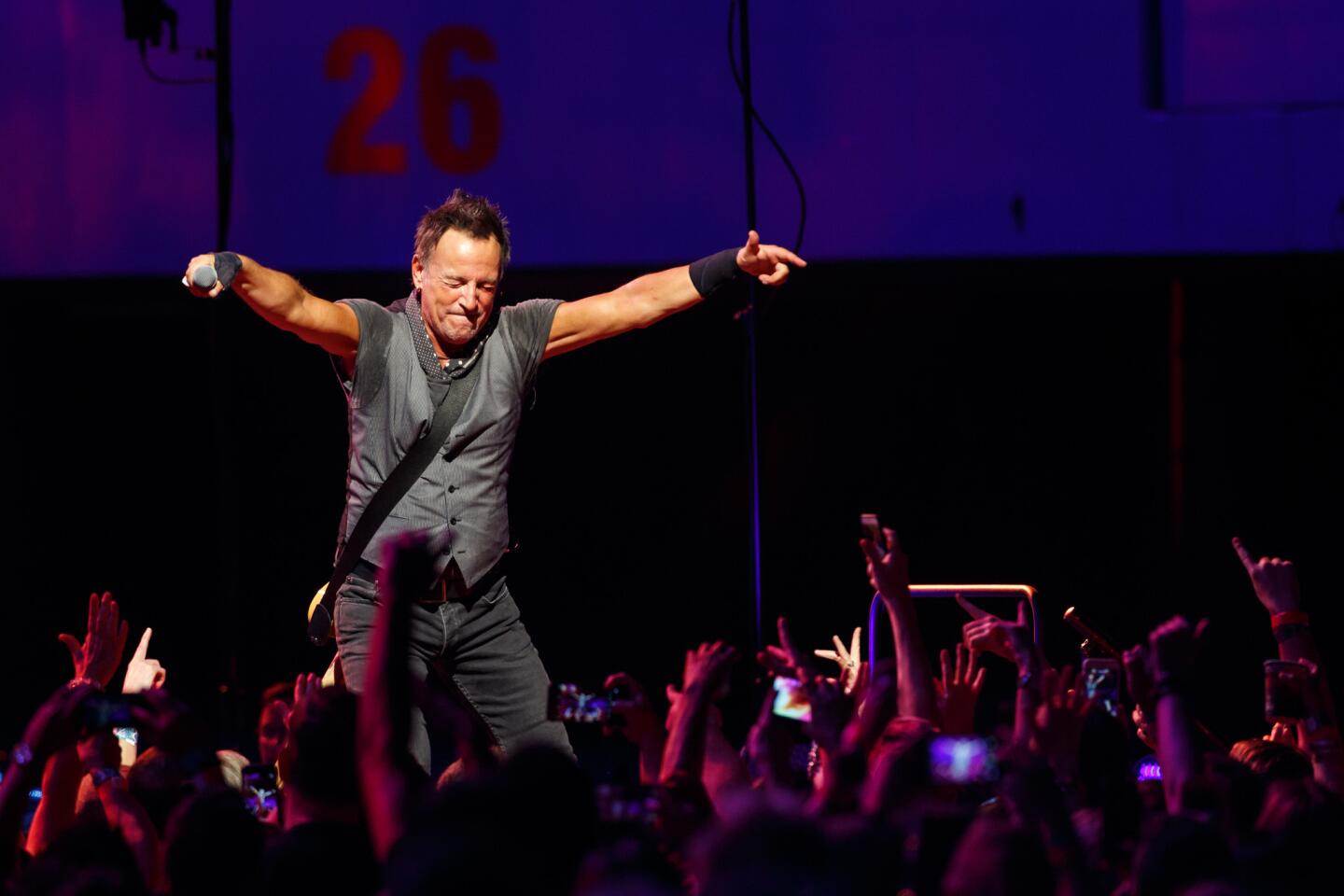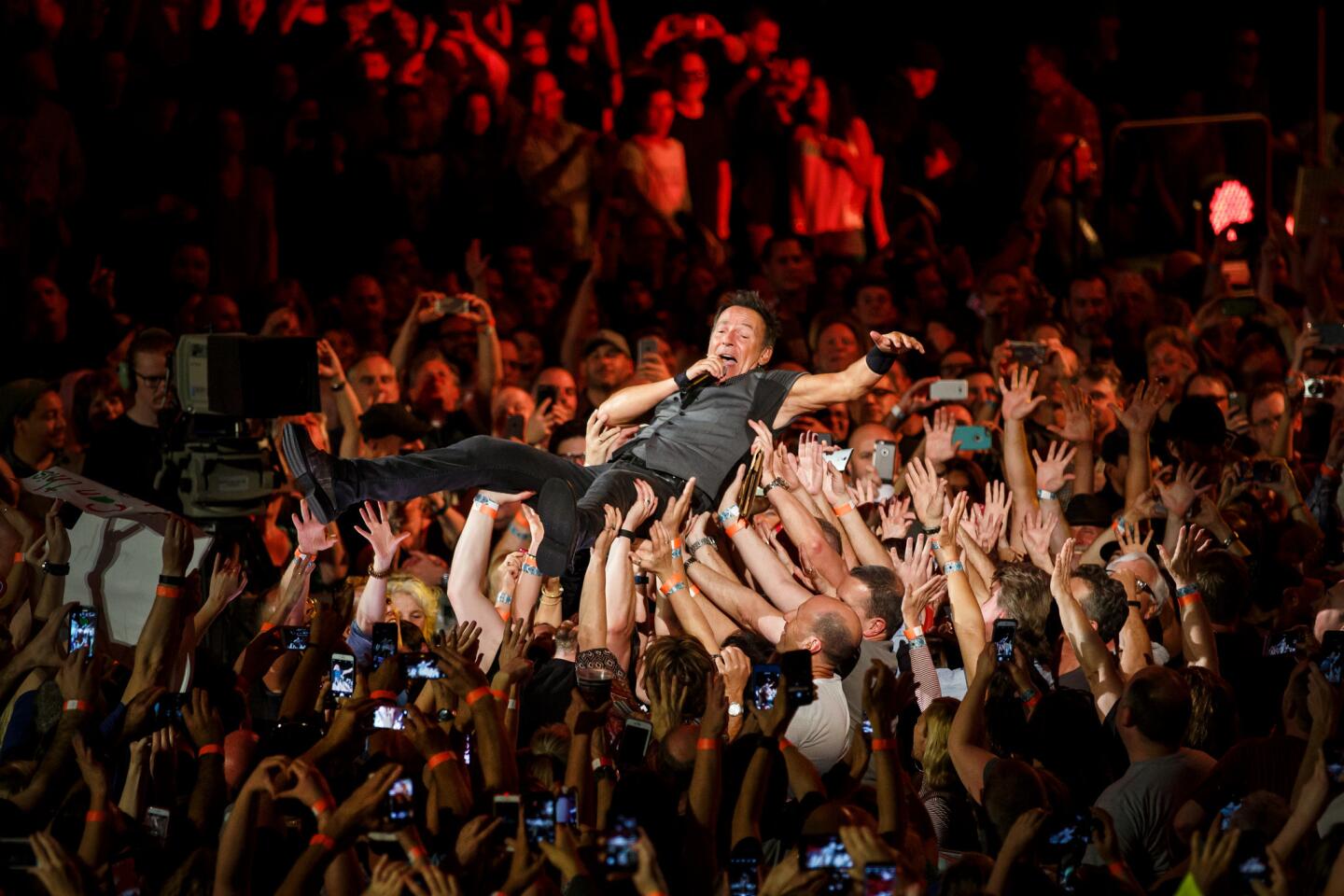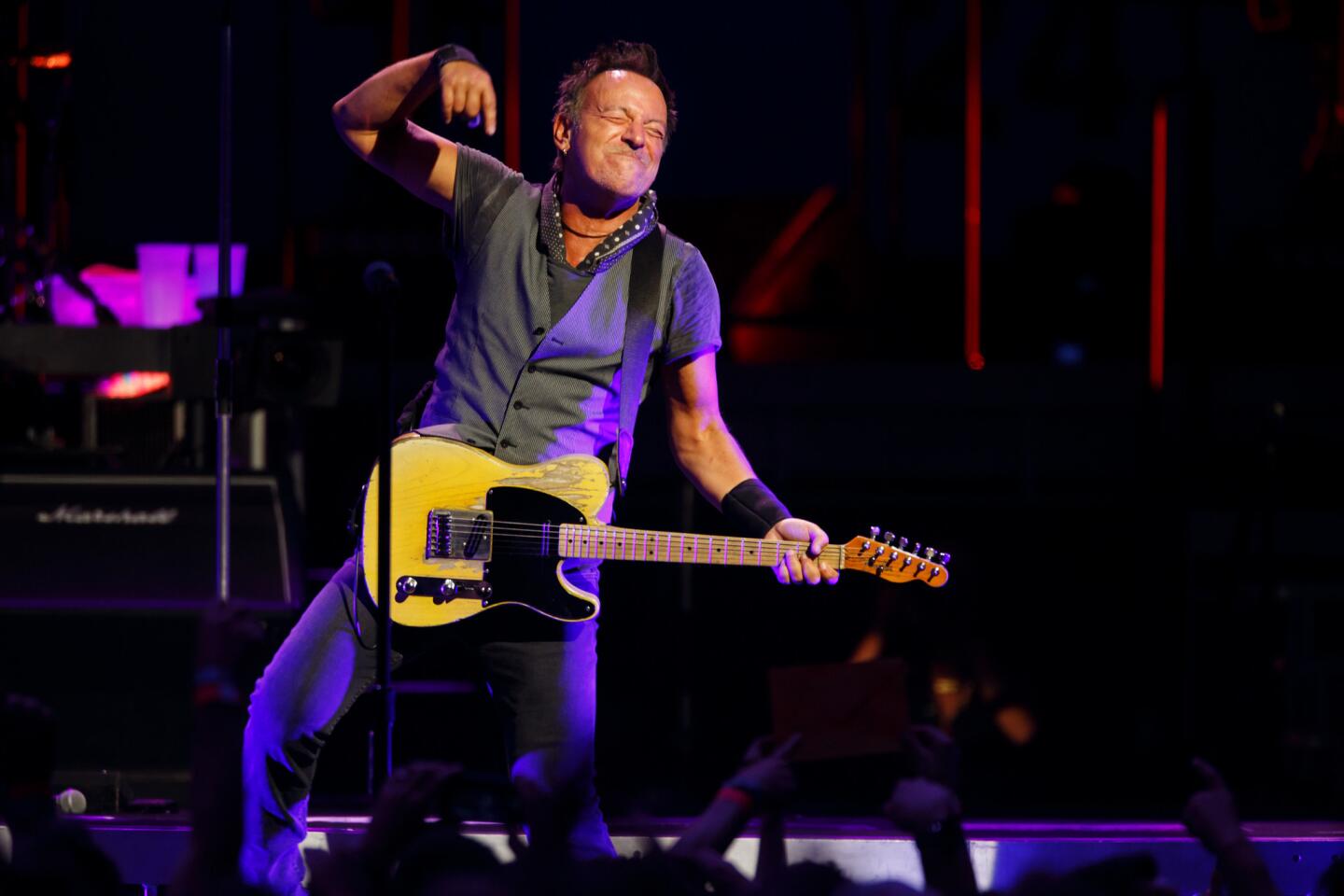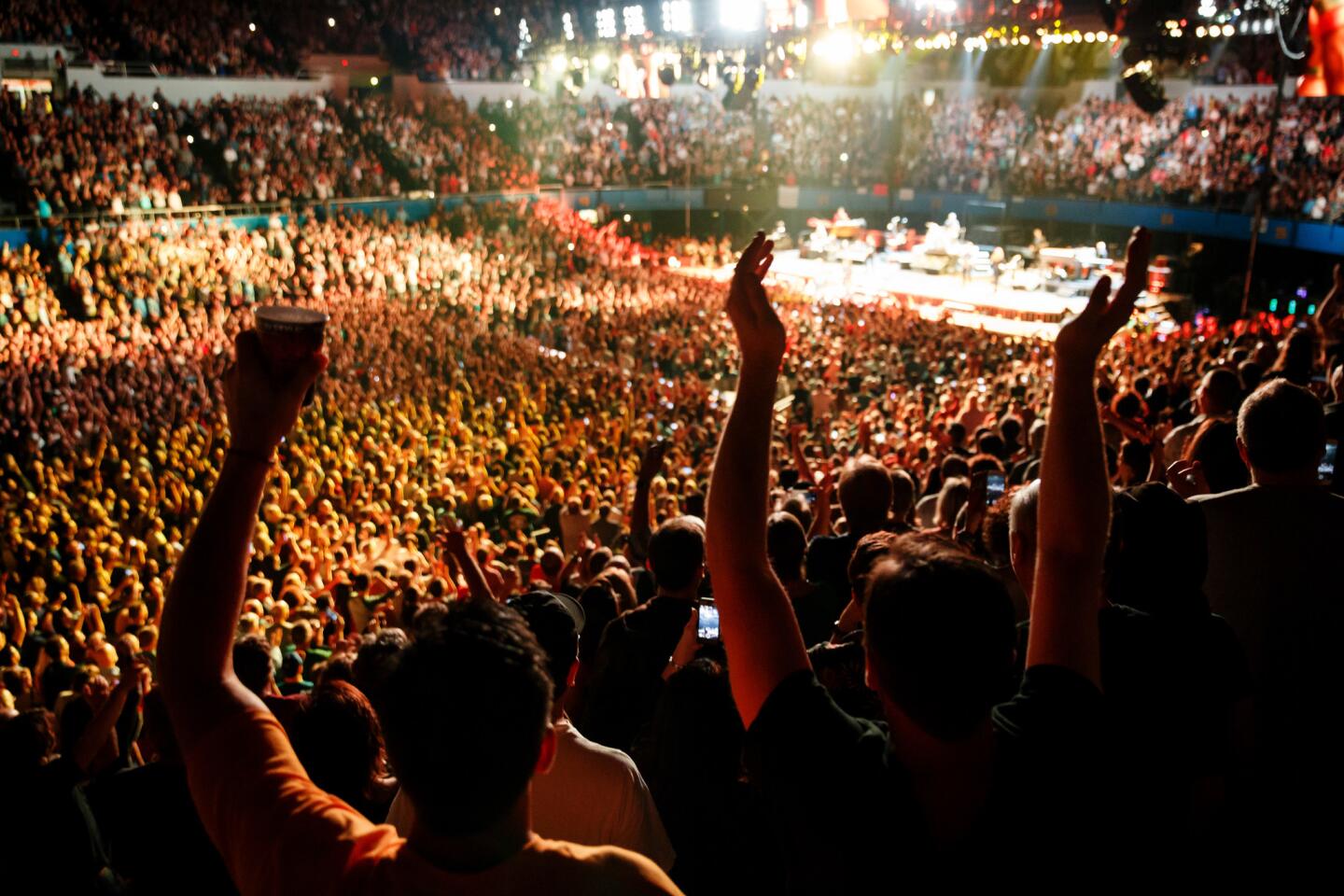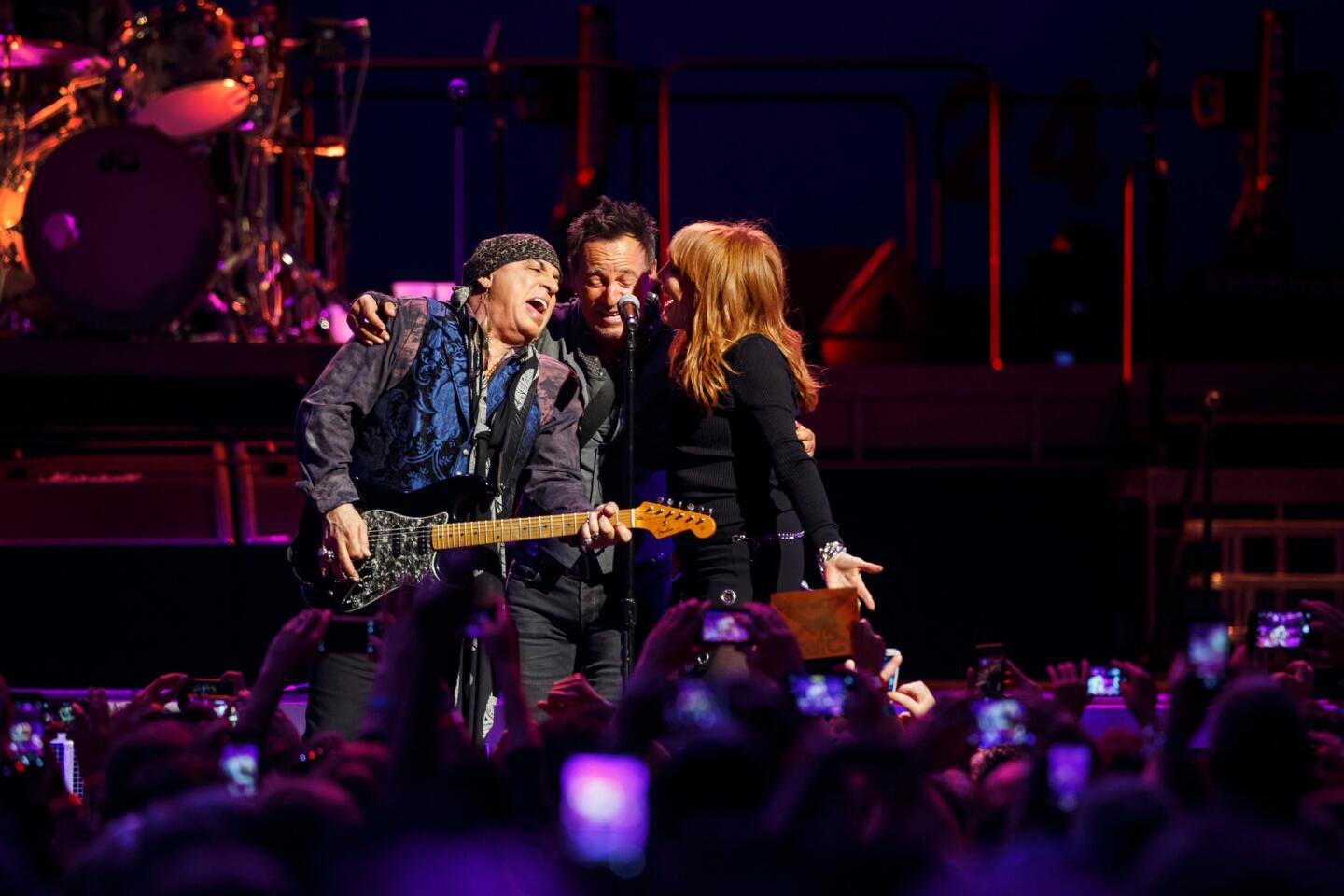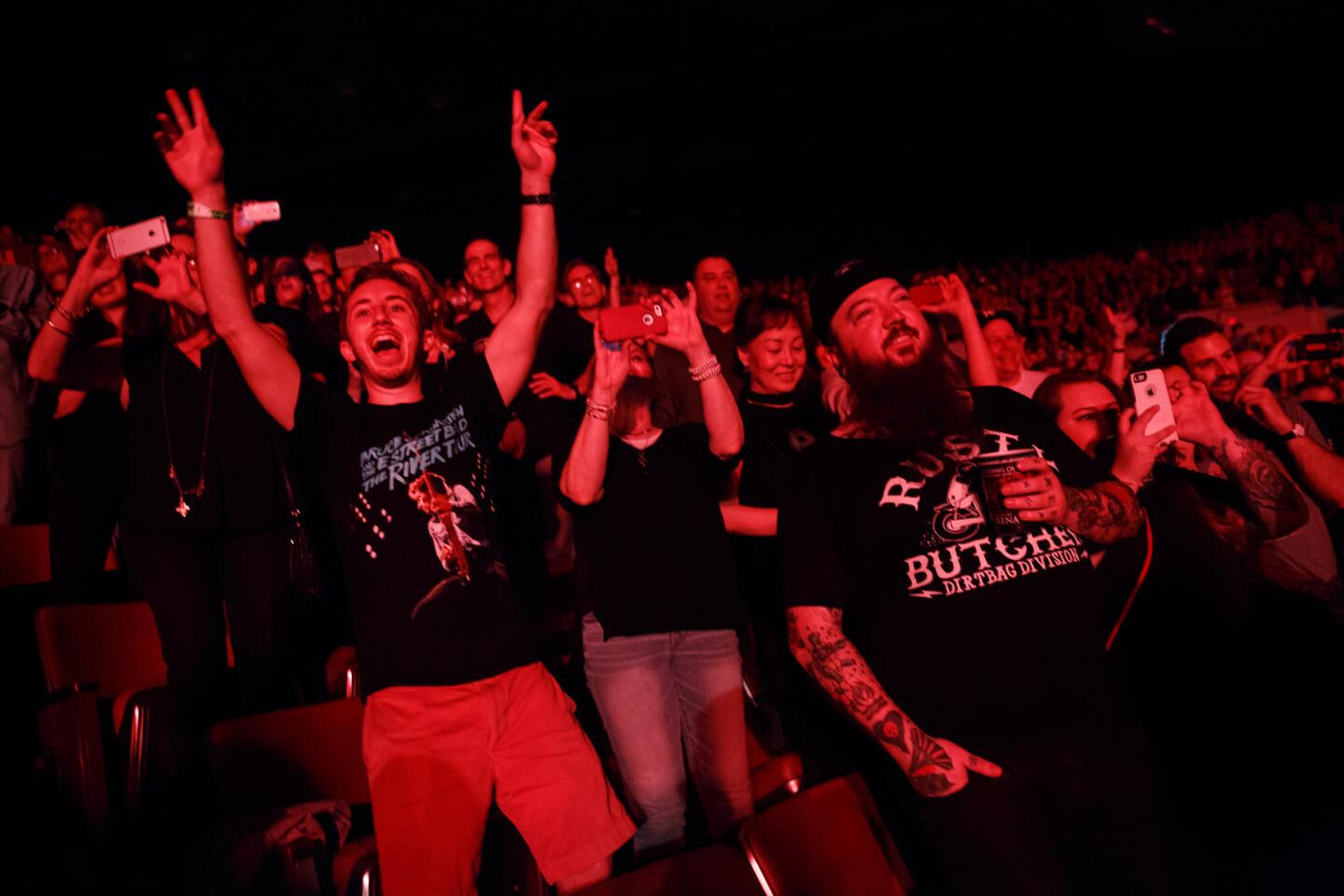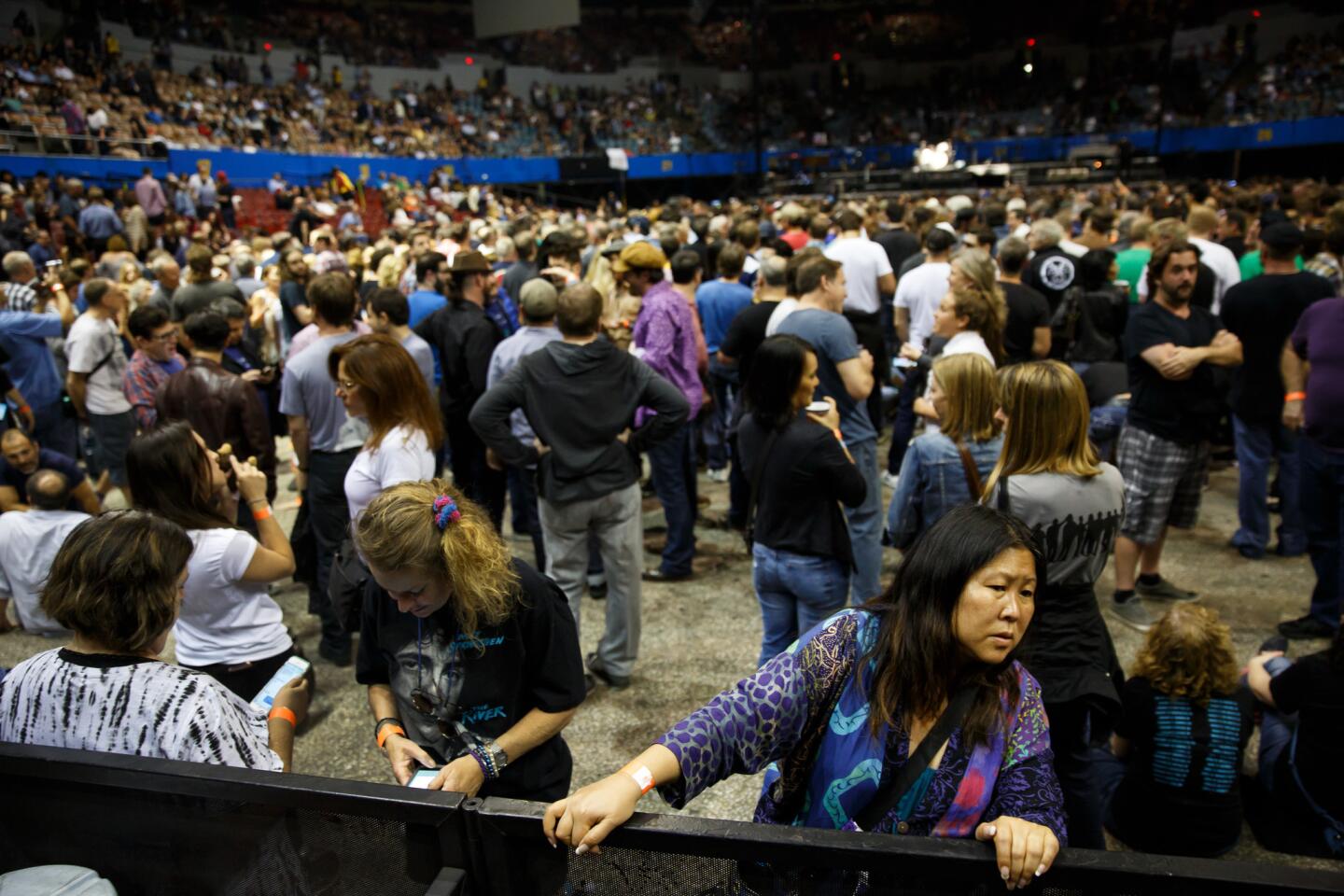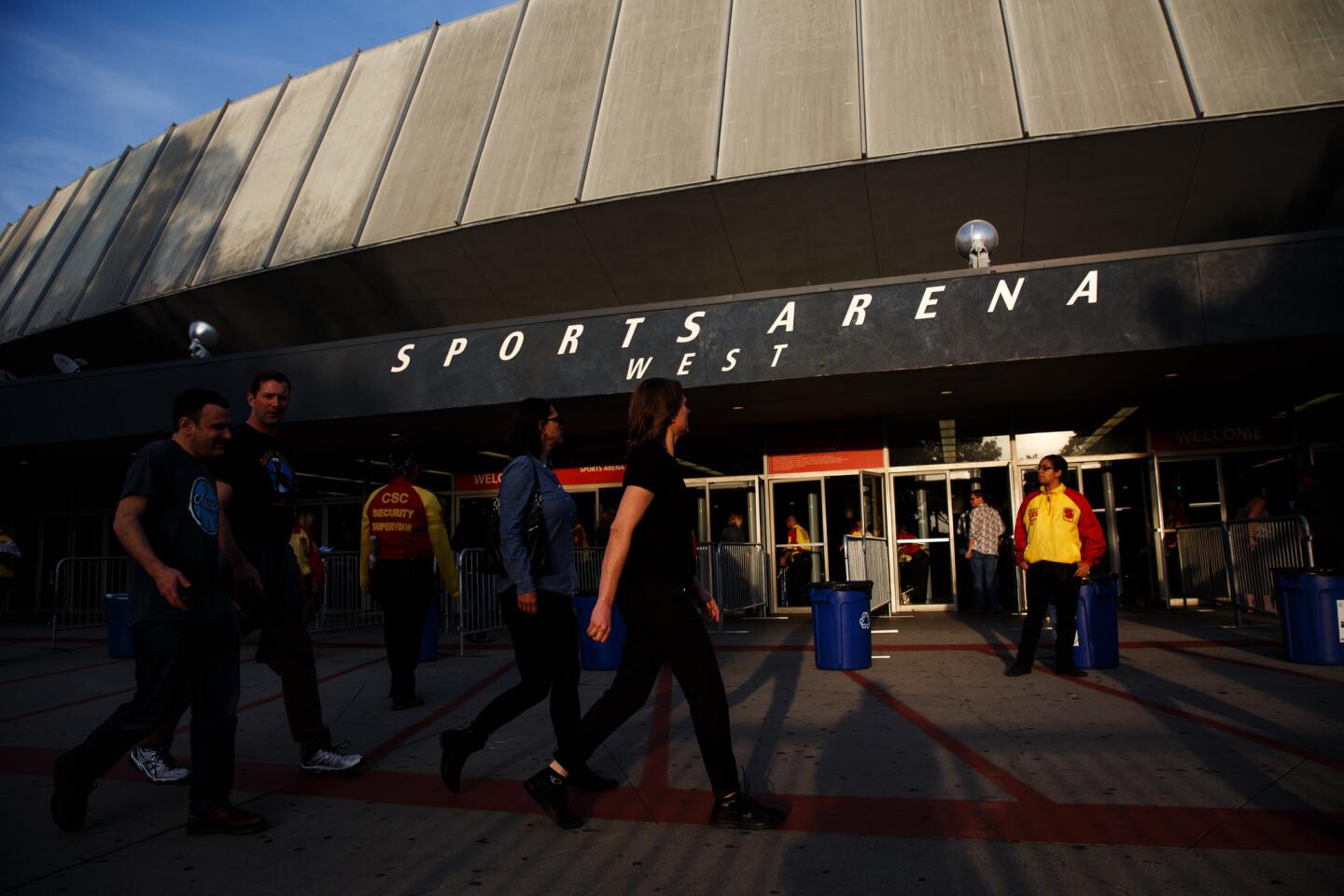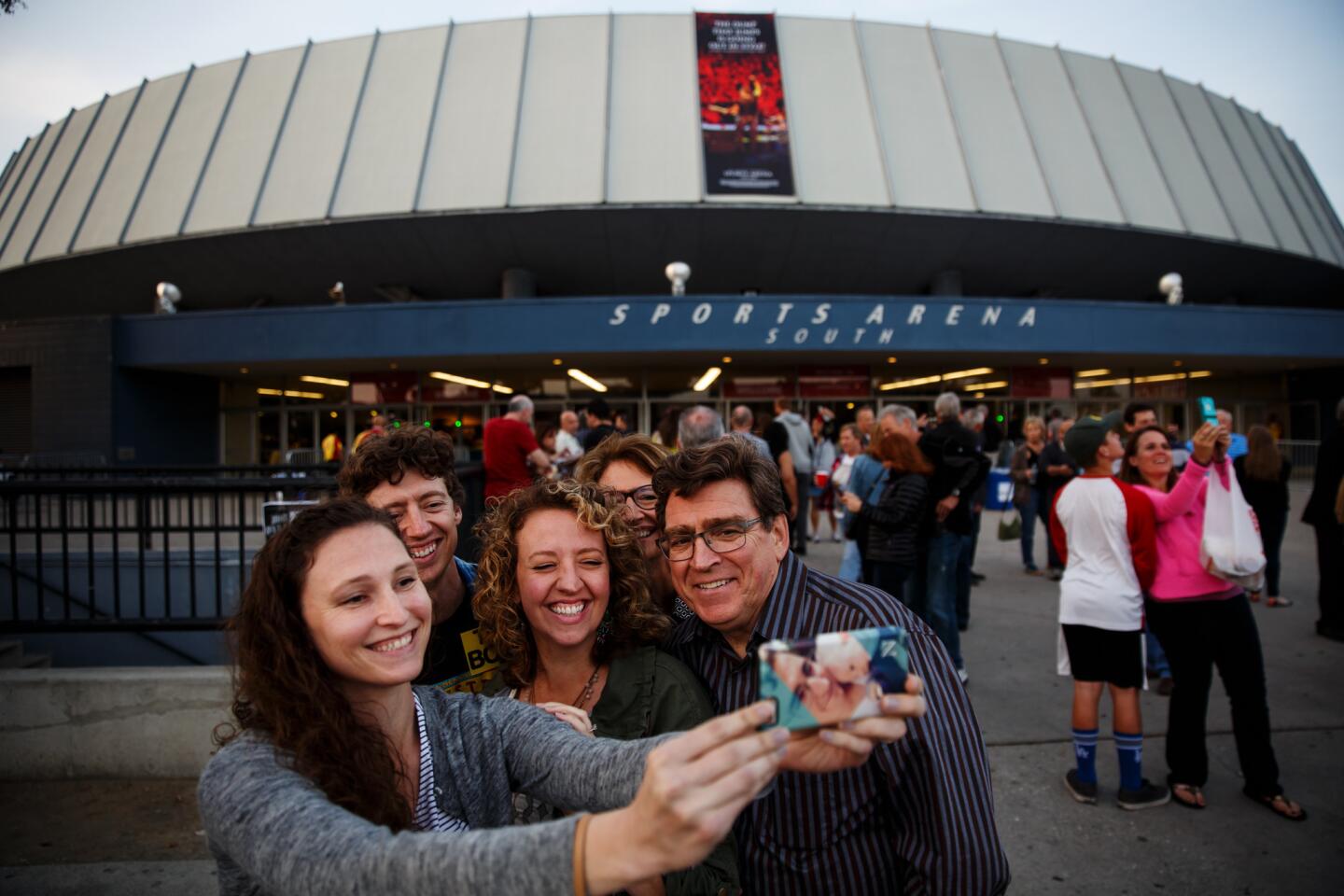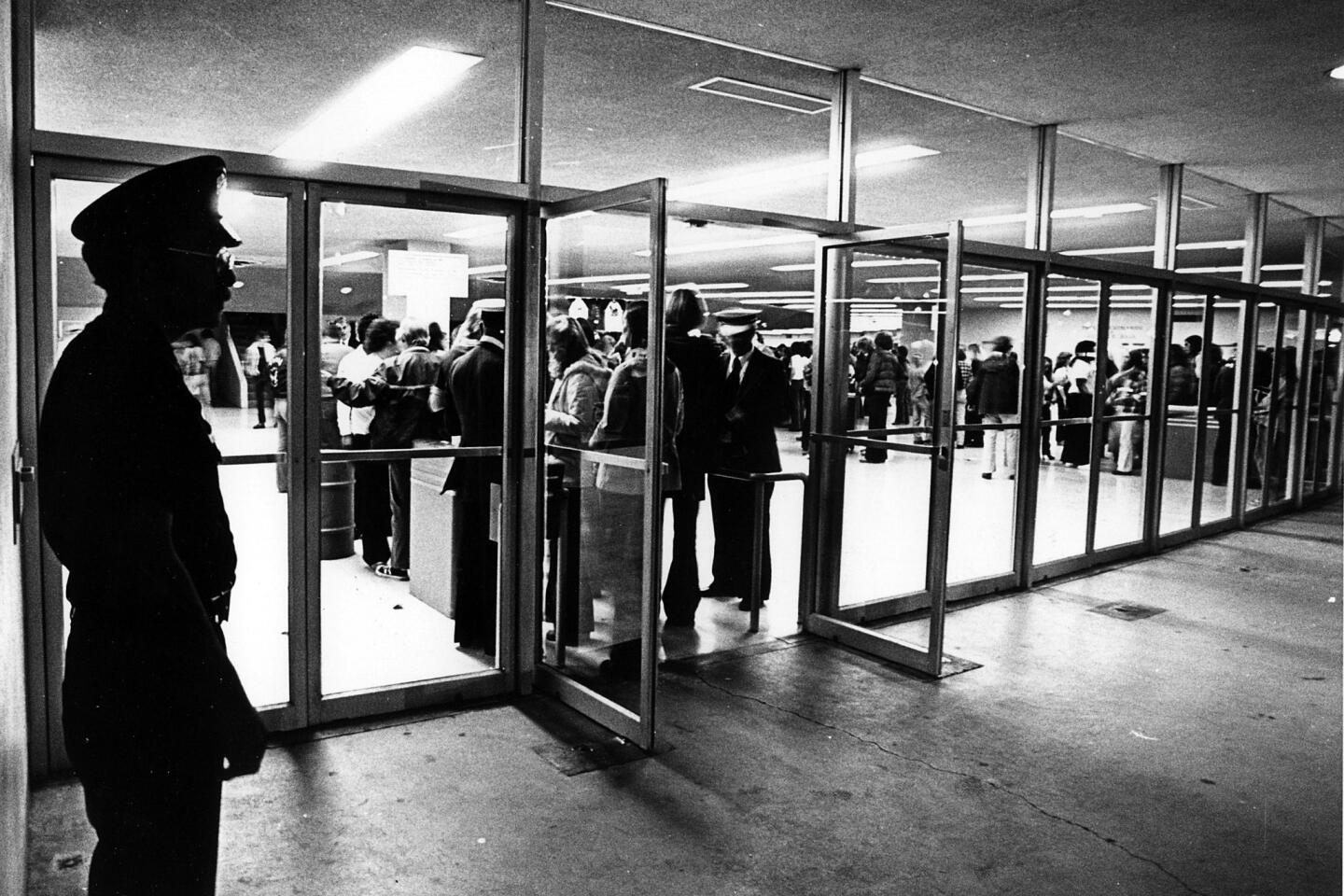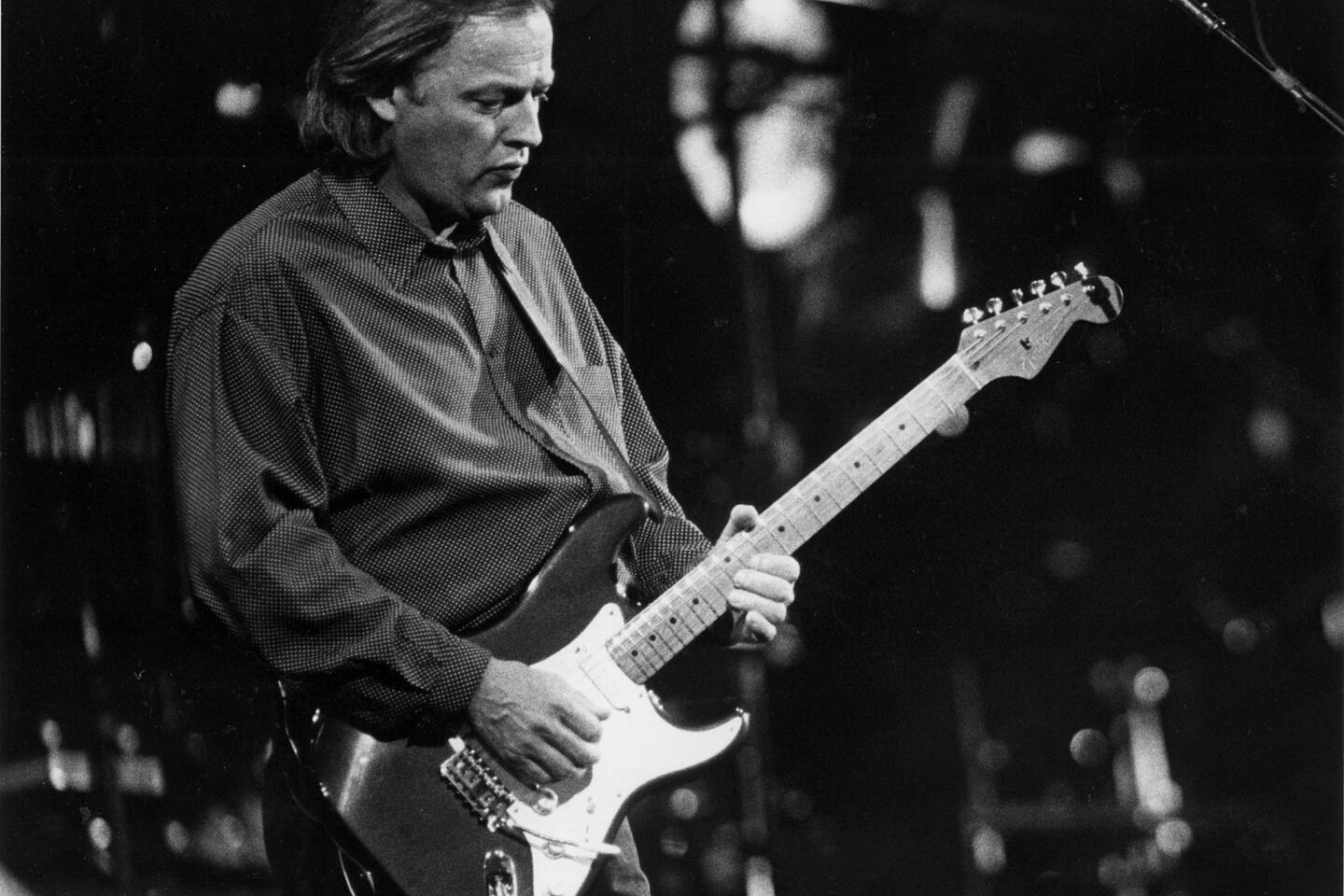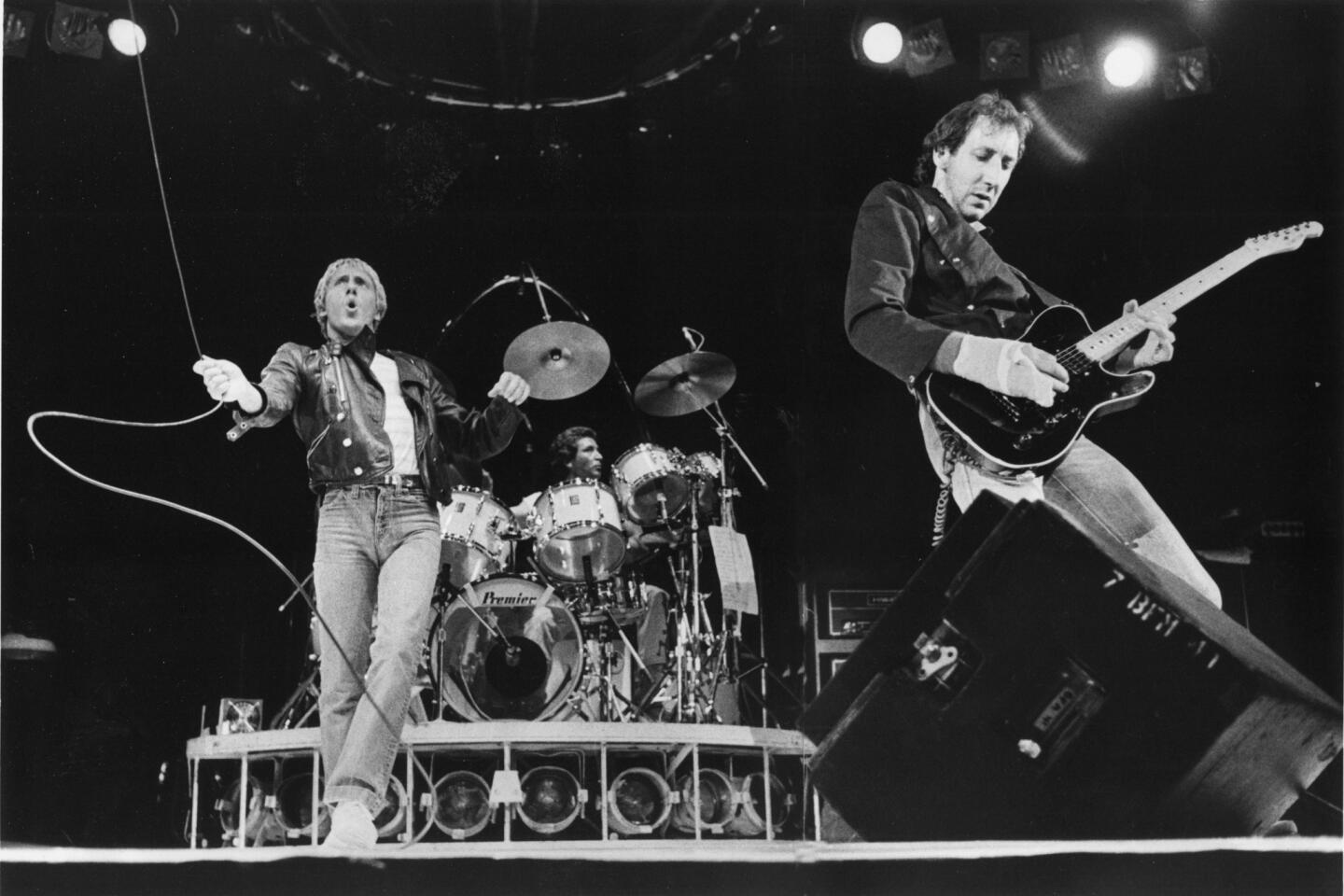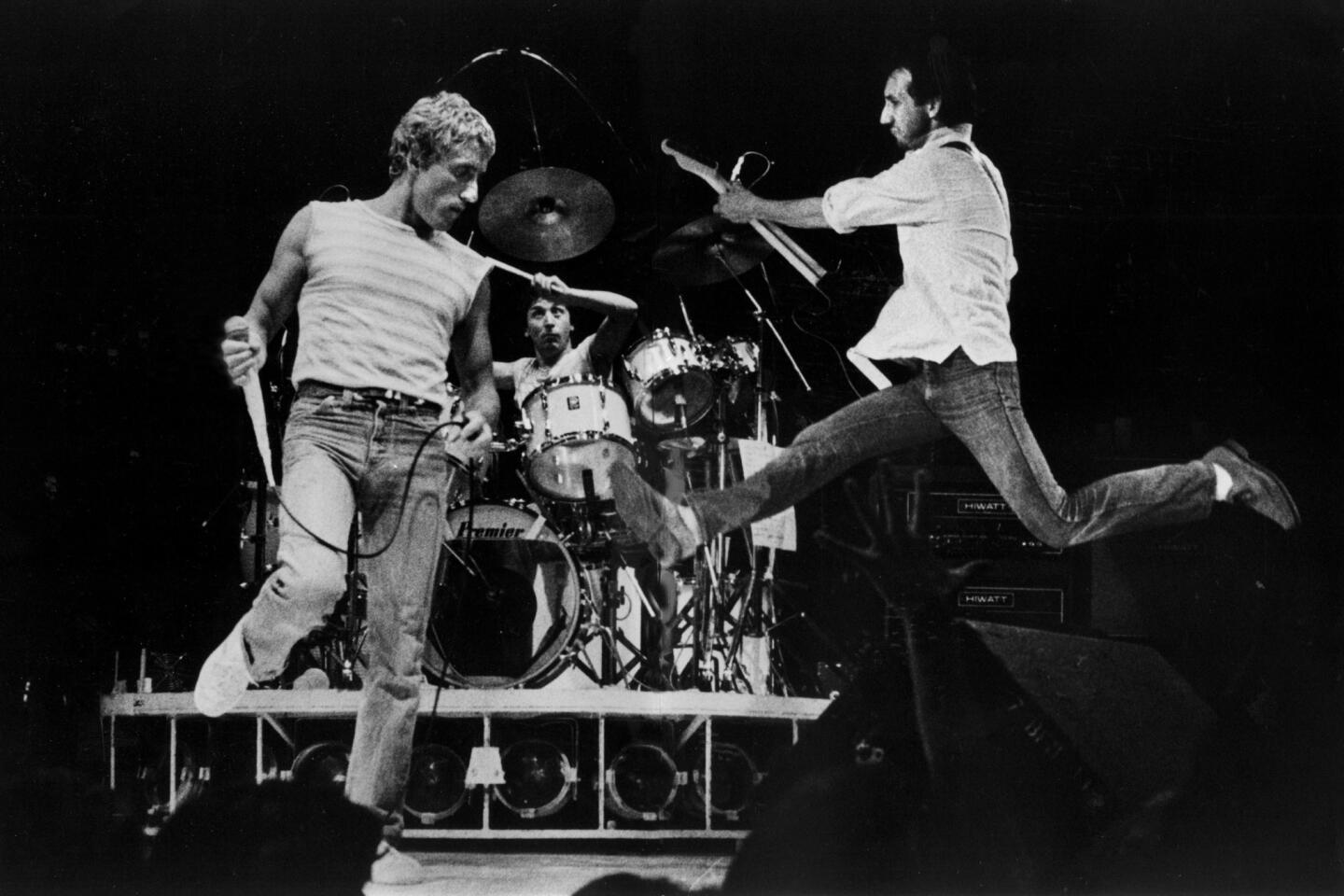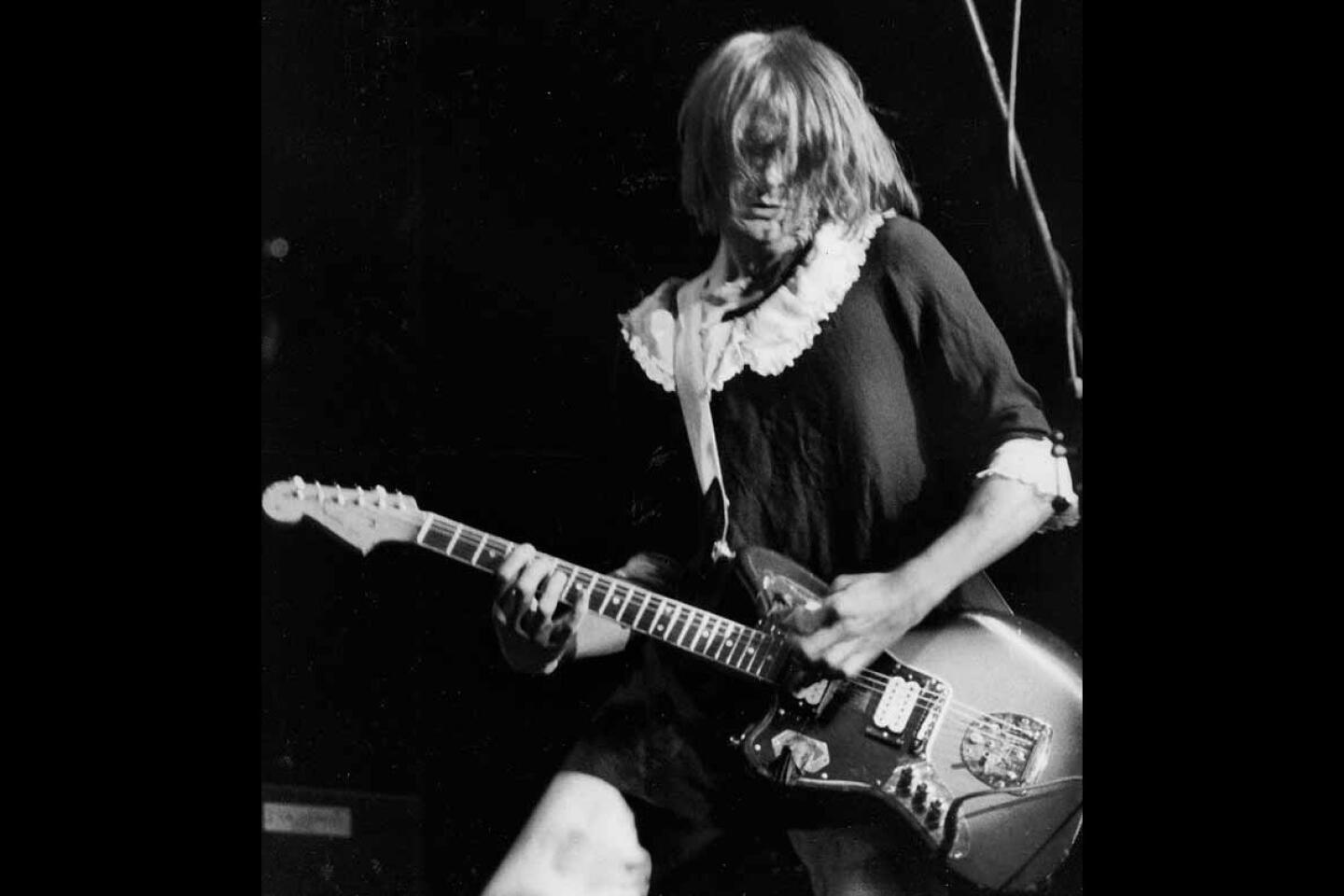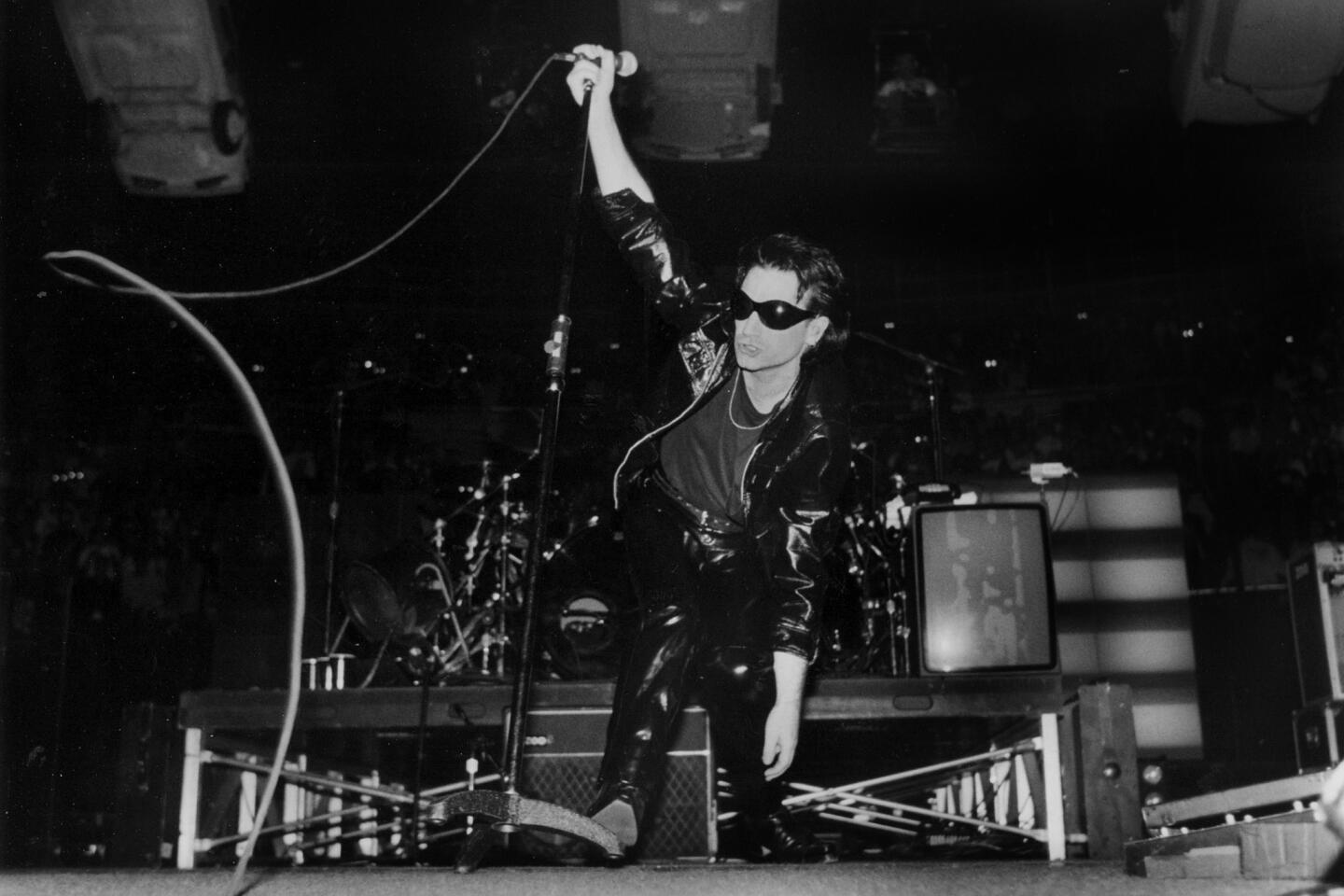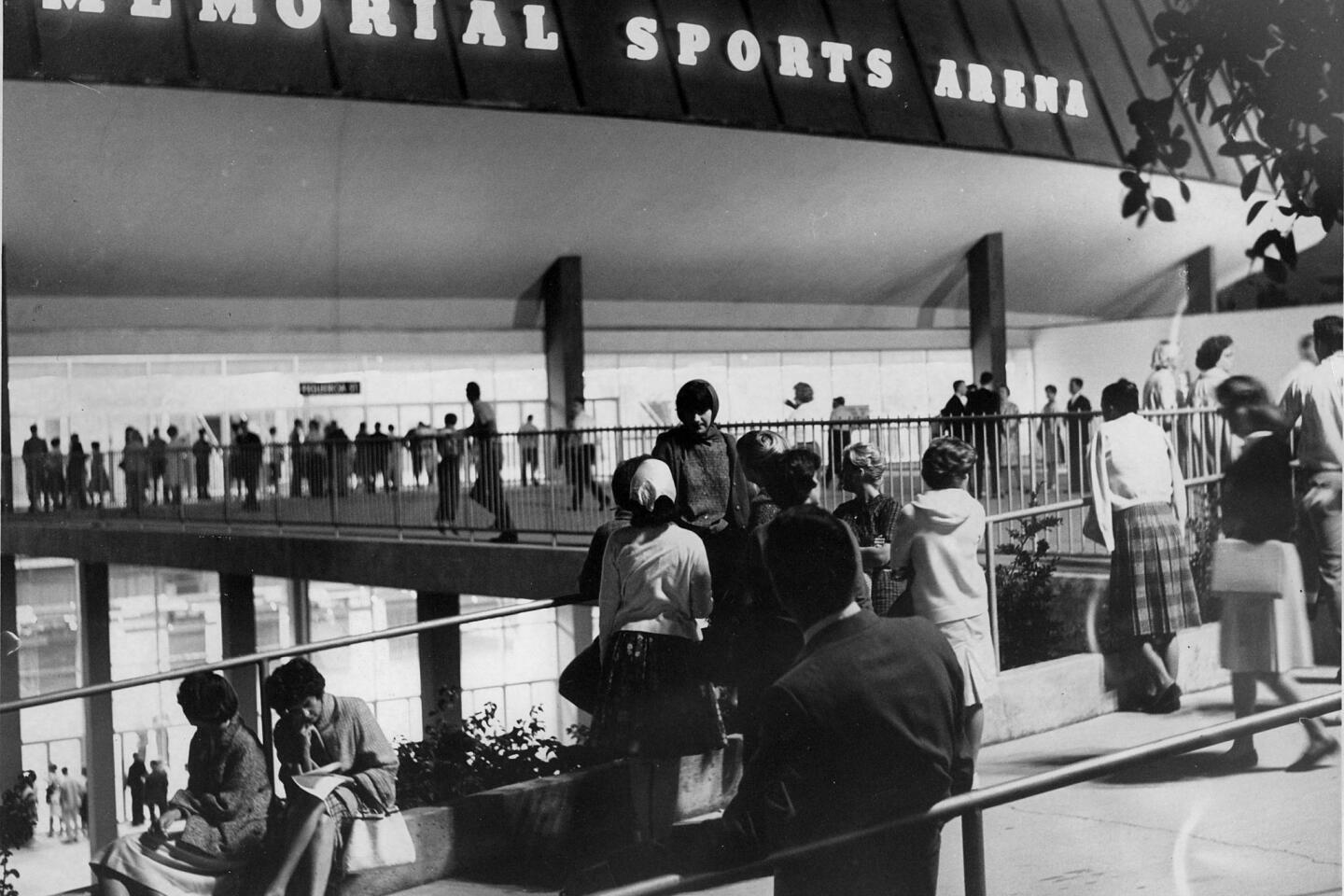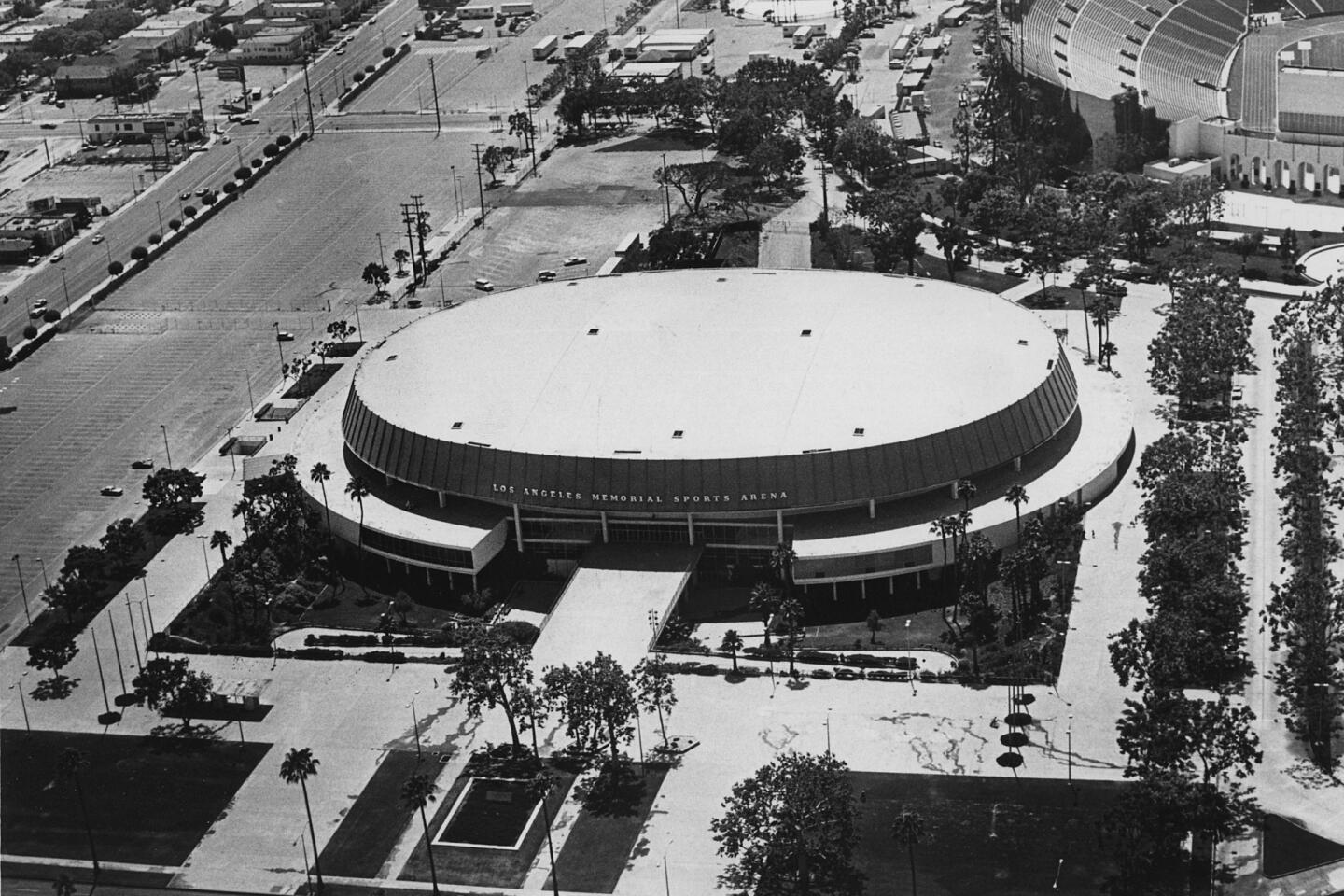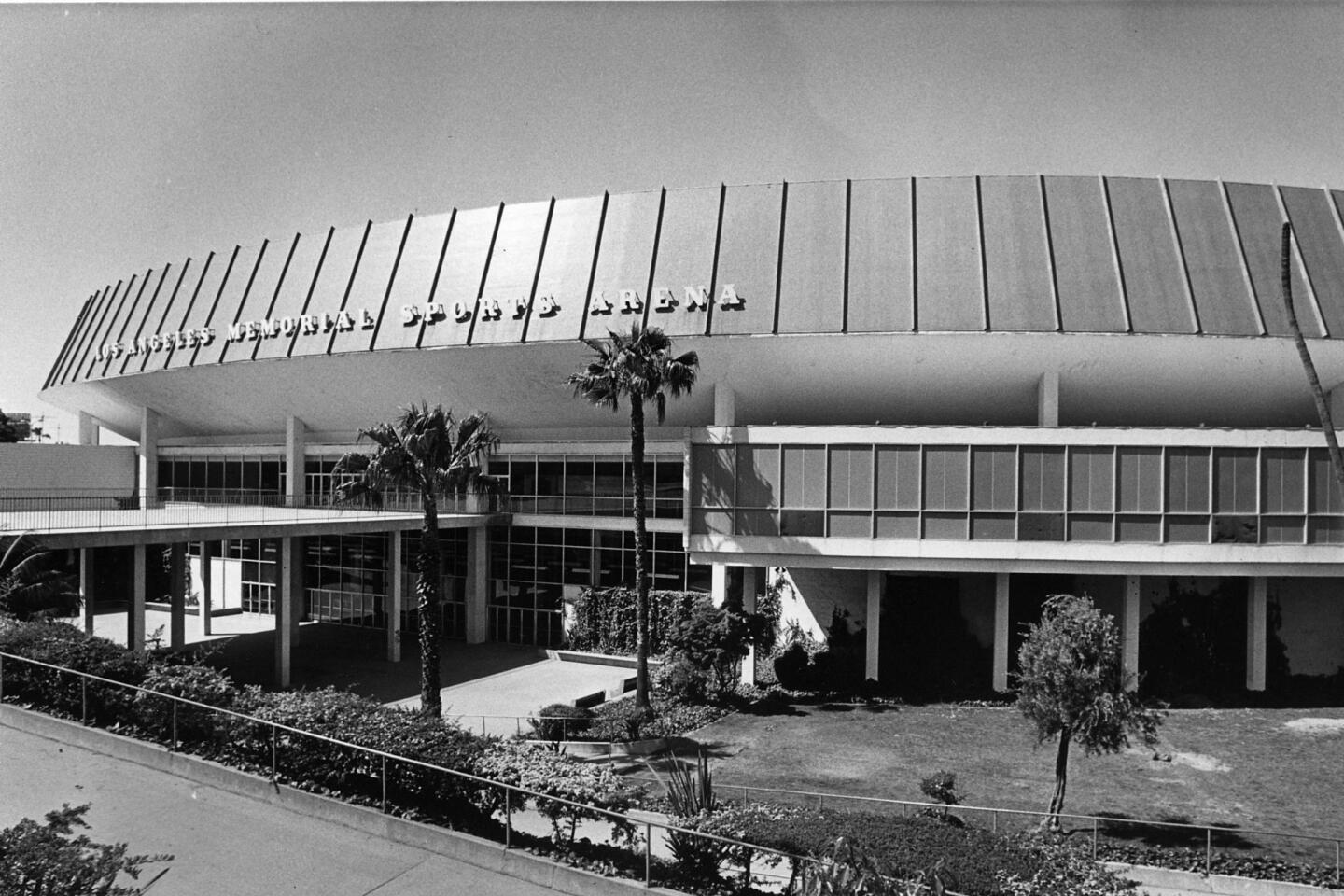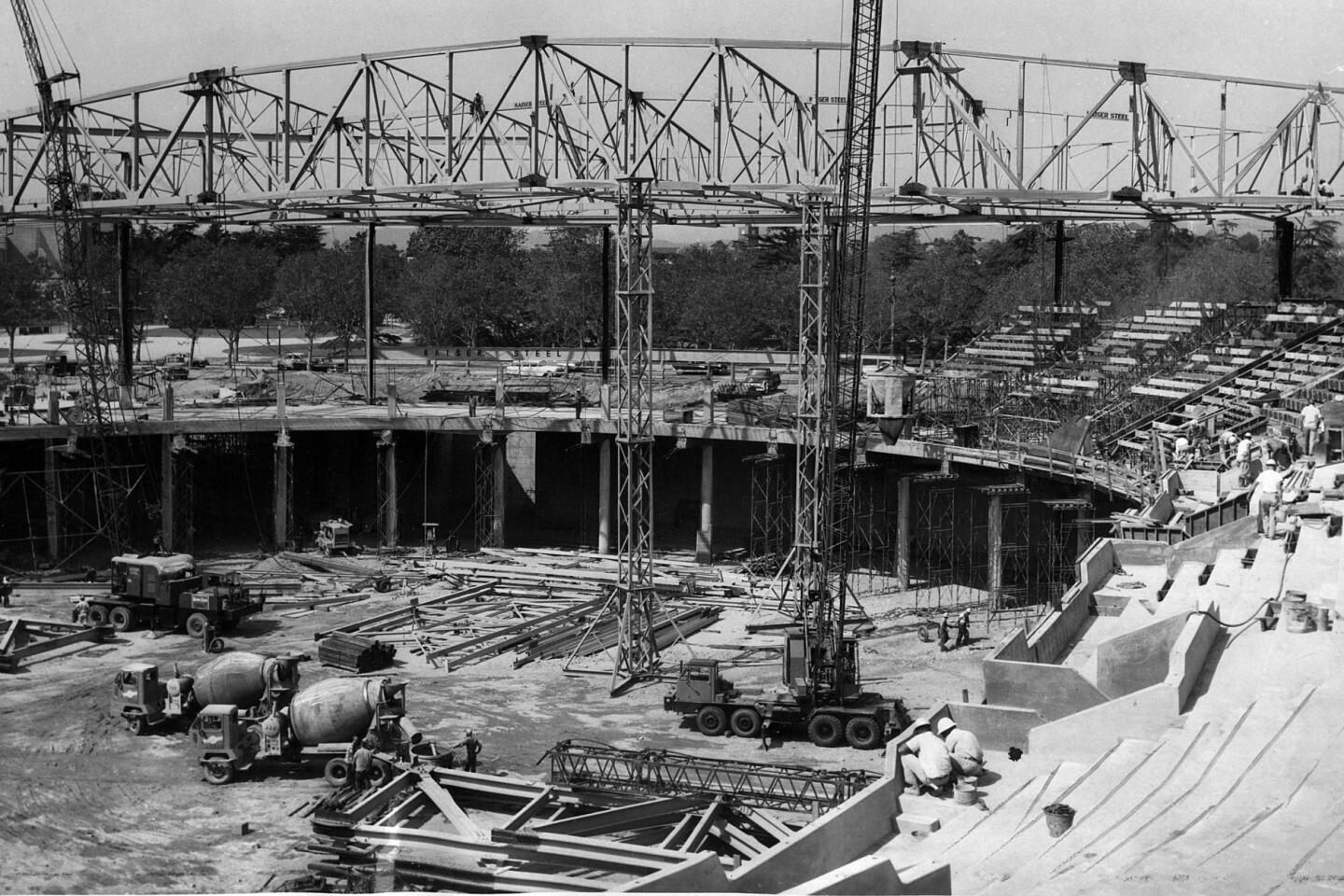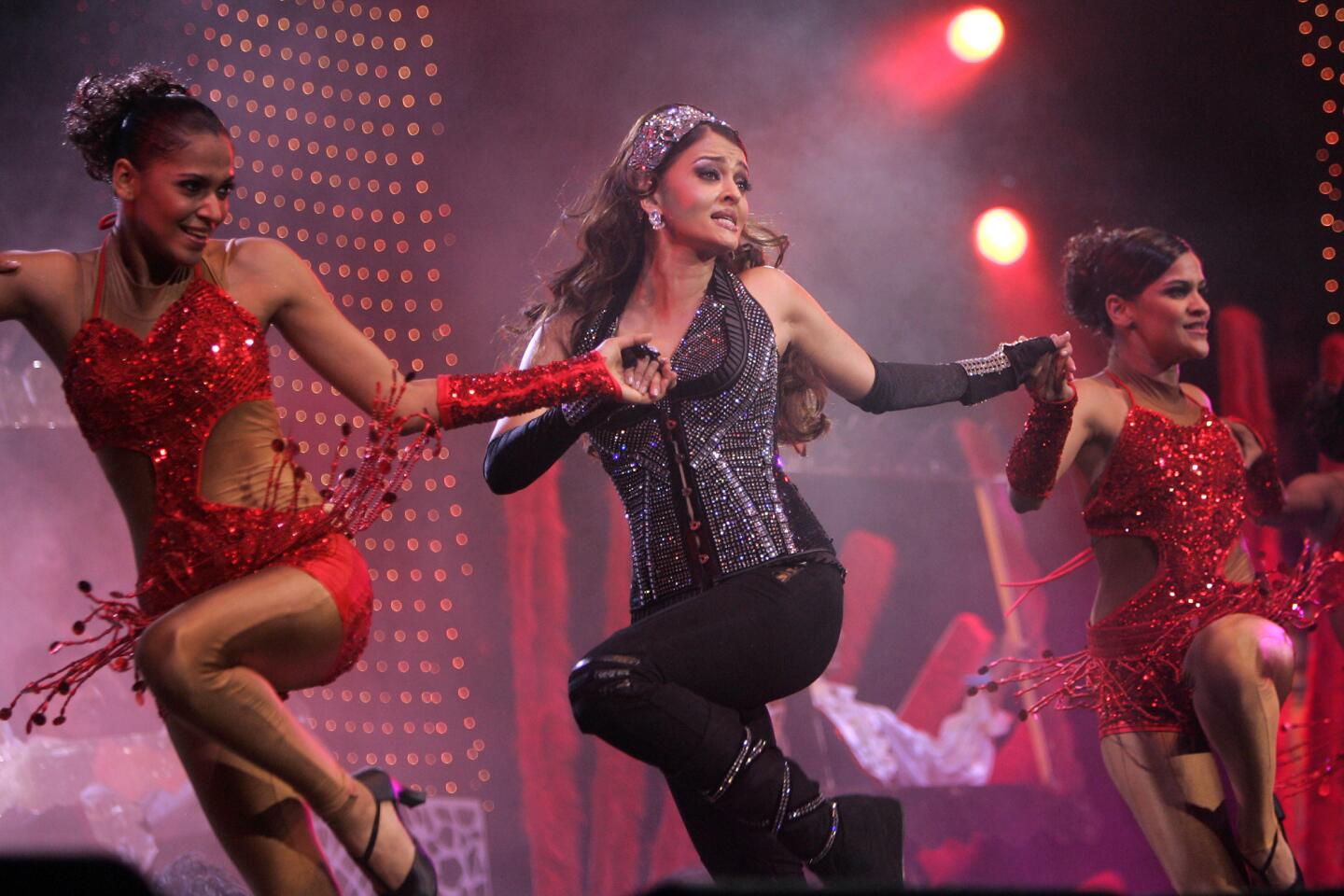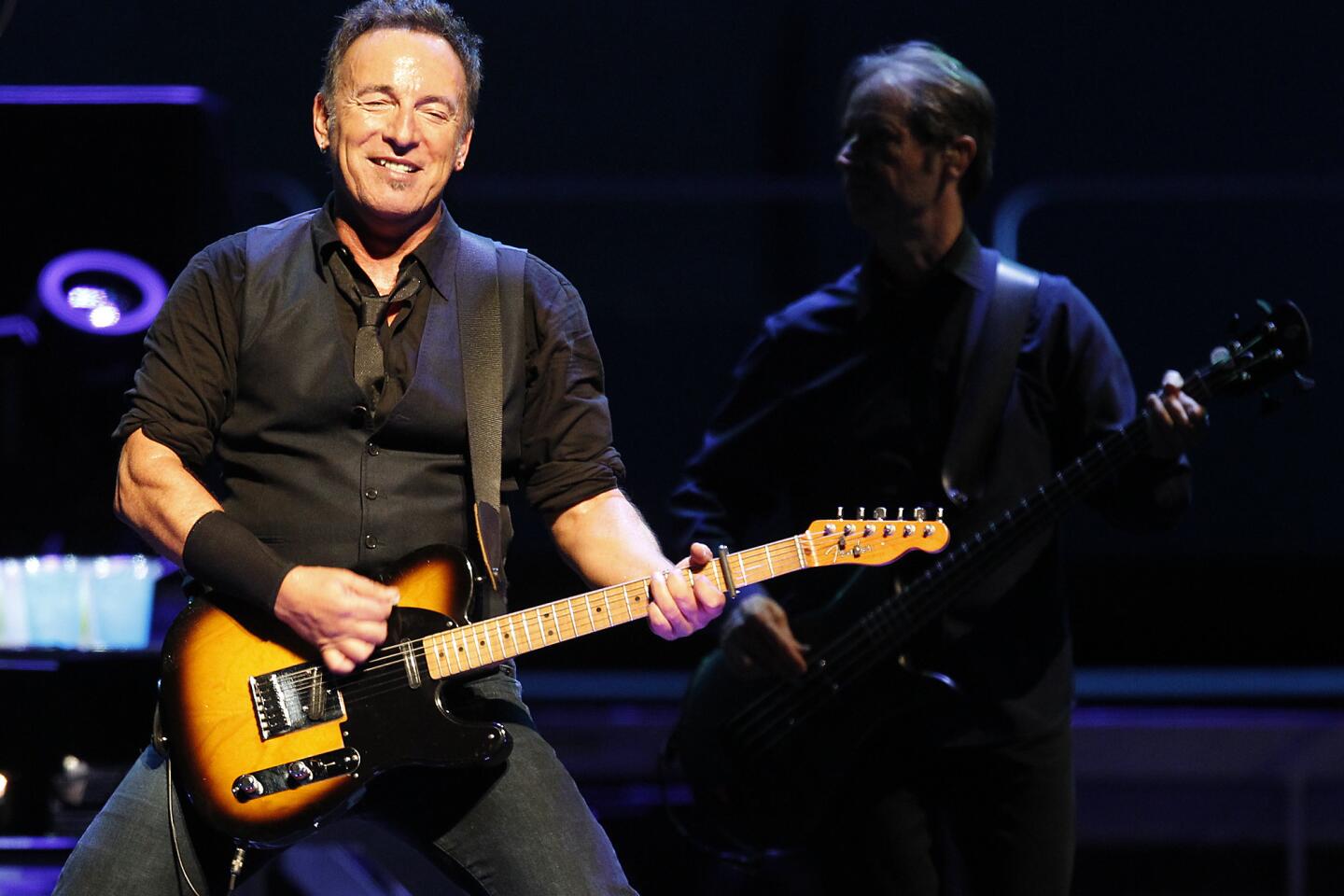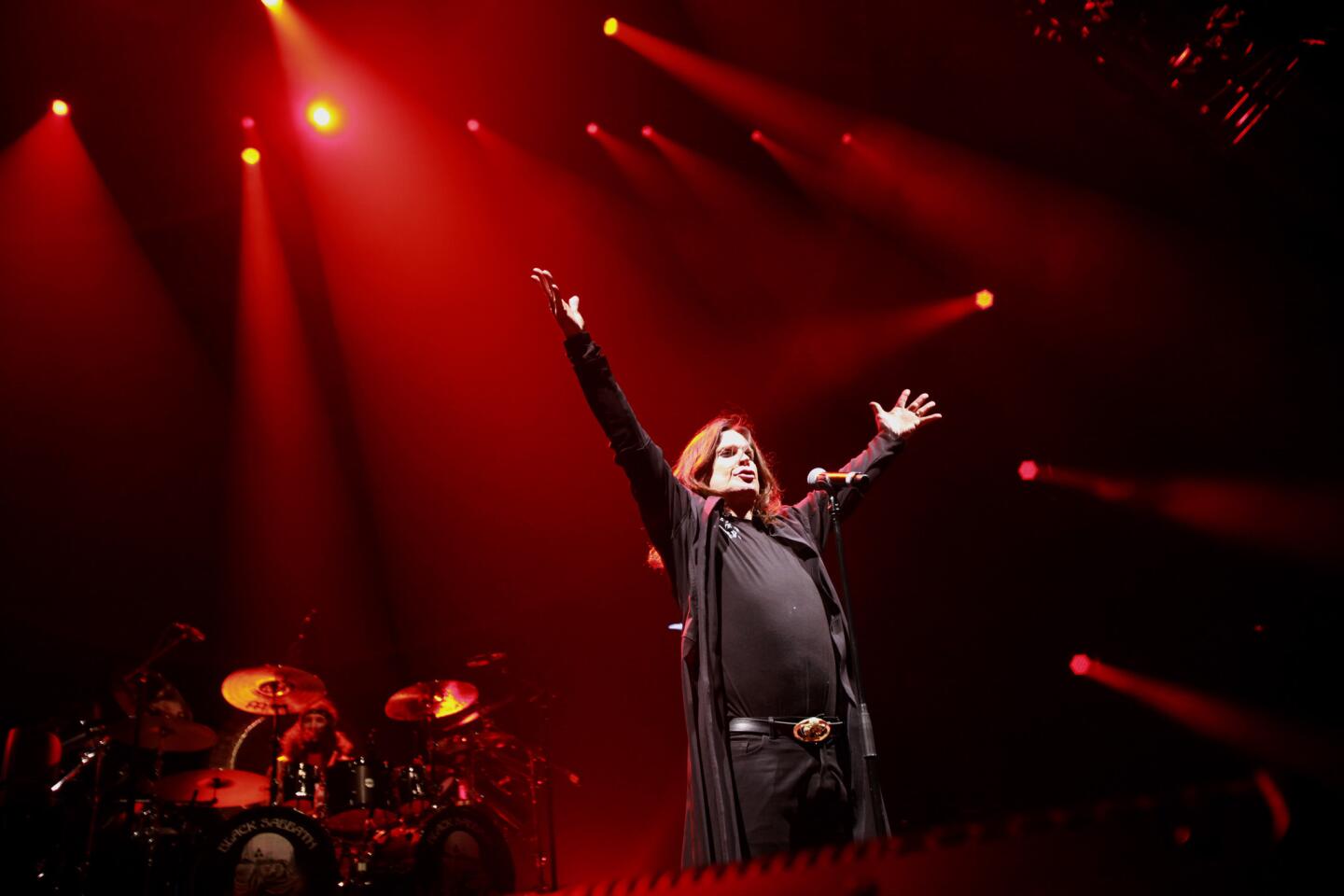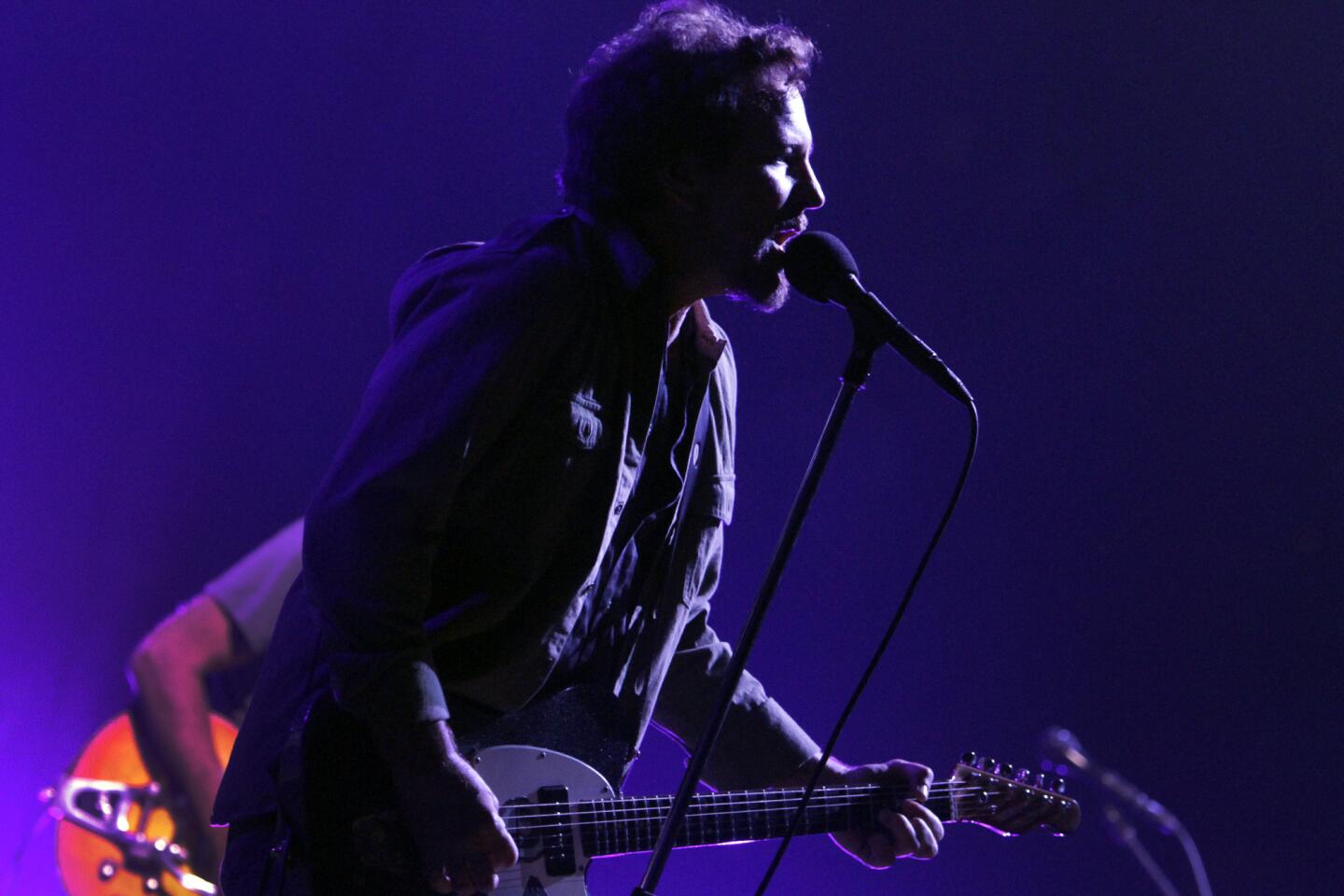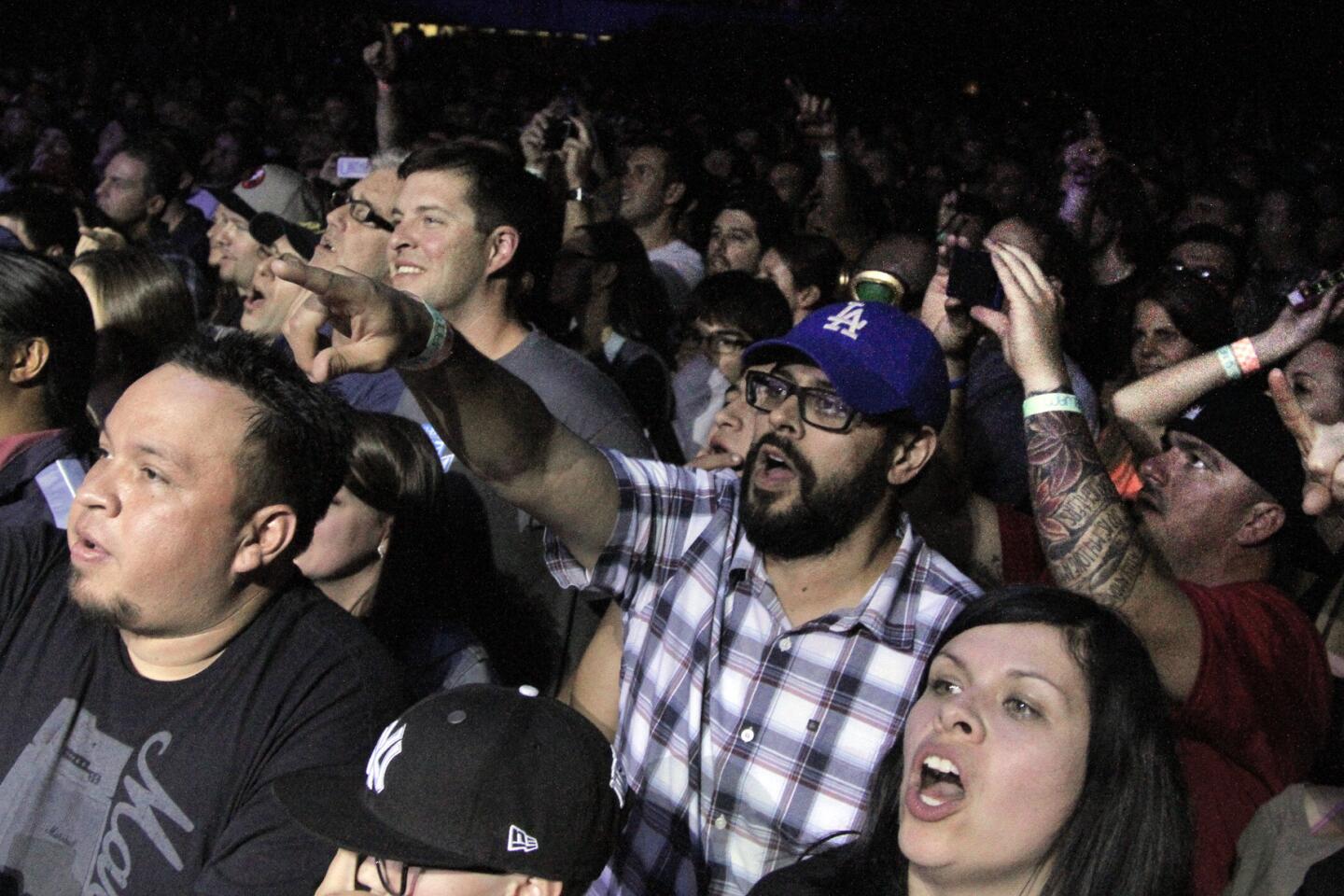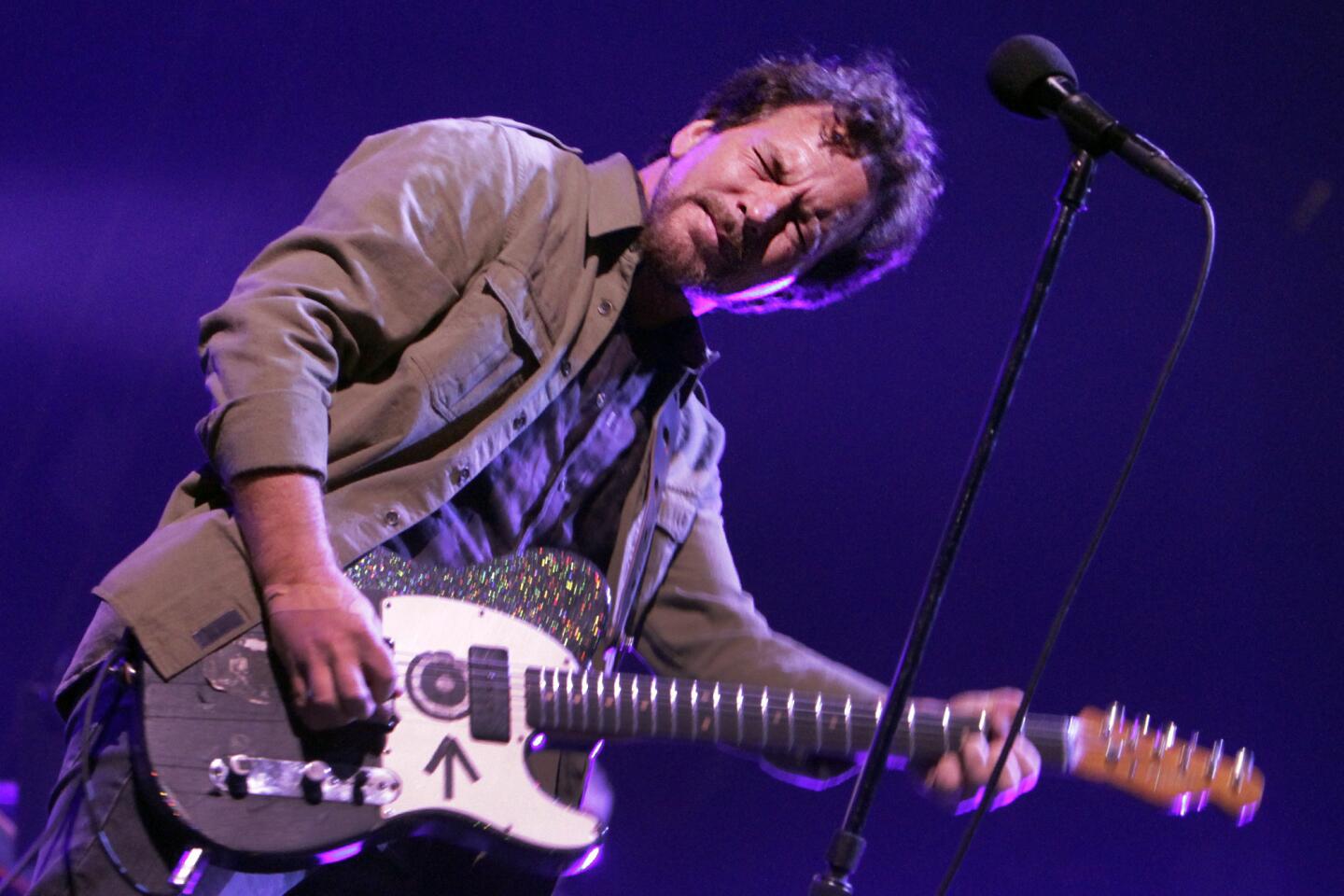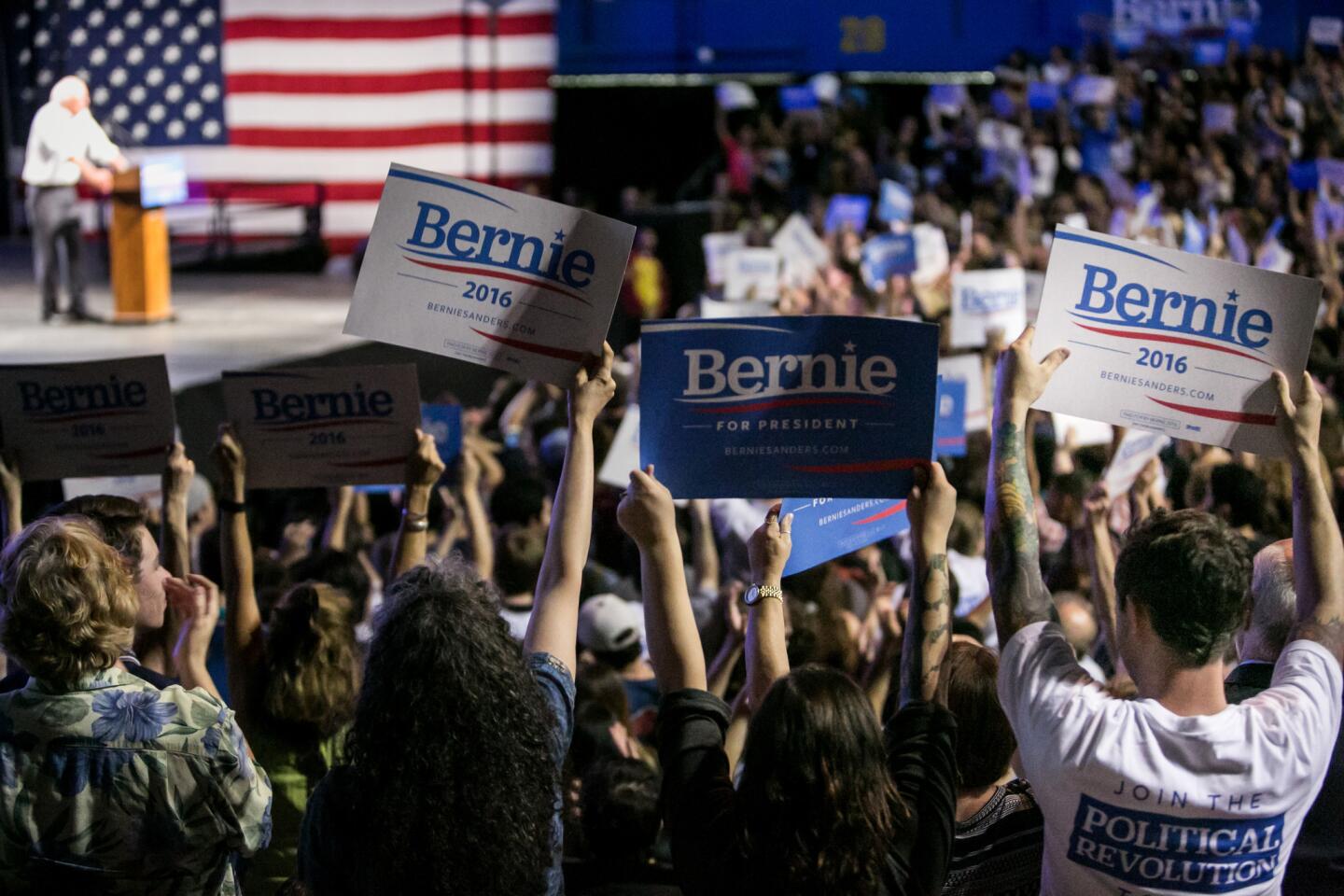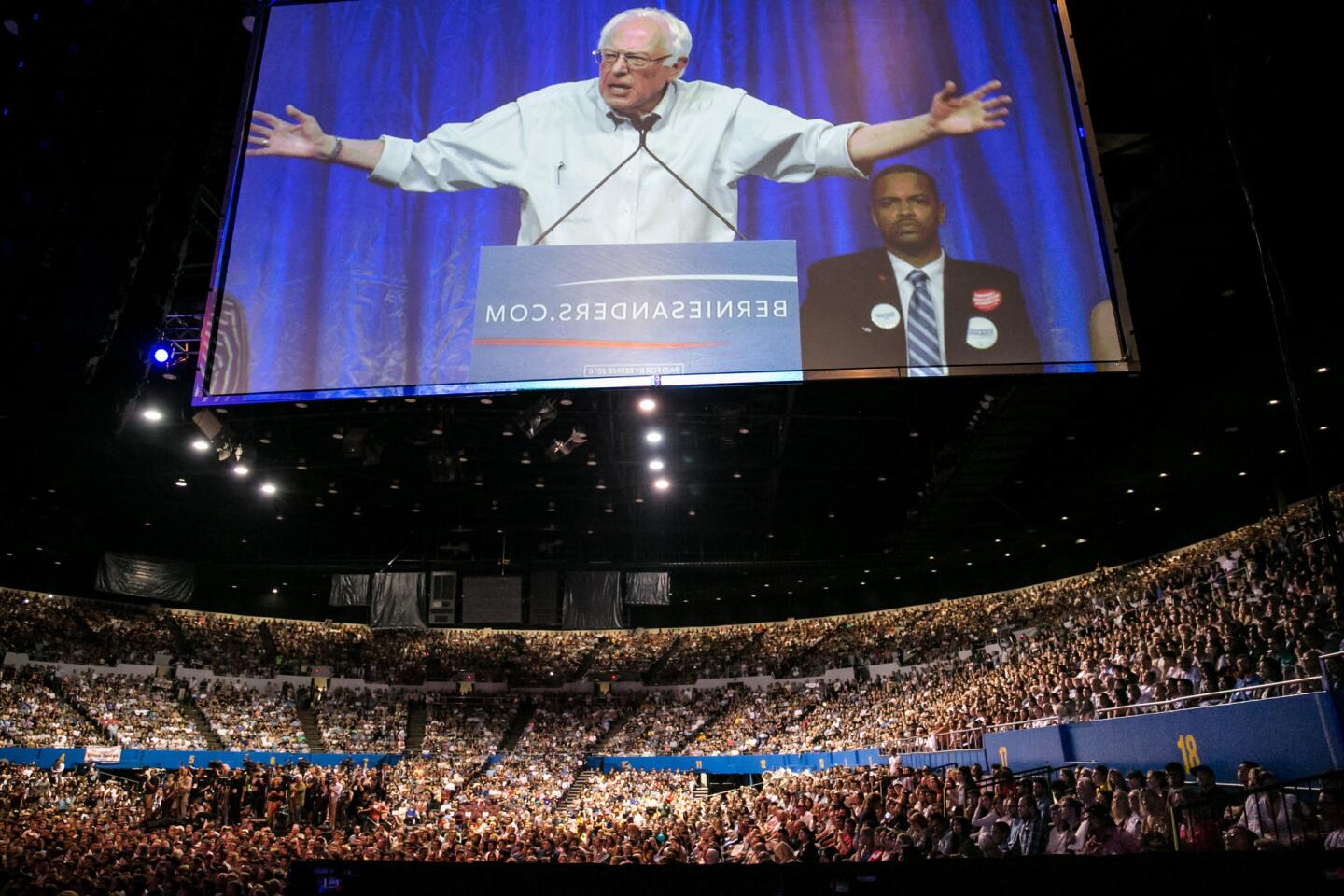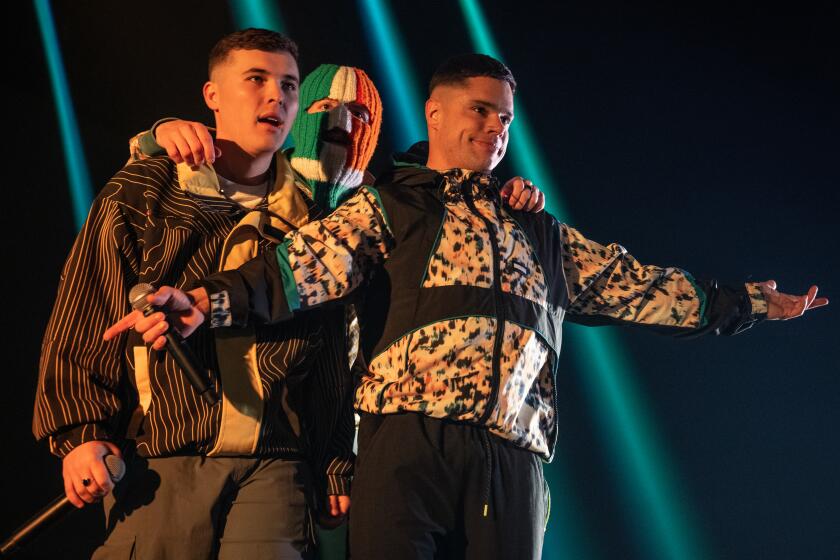Bruce Springsteen’s four-hour finale at the L.A. Sports Arena: A fitting ending to ‘The Dump That Jumps’
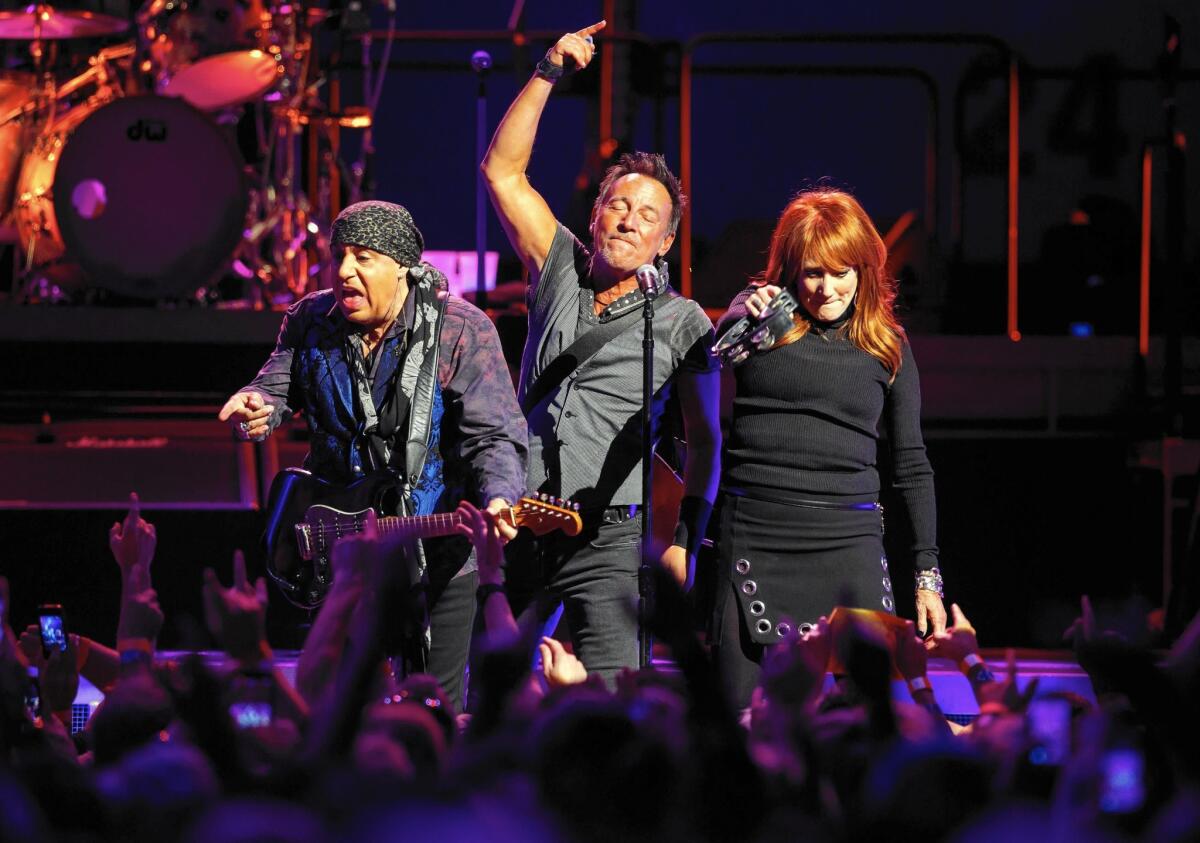
- Share via
Bruce Springsteen looked out on Saturday’s sold-out crowd at the Los Angeles Memorial Sports Arena. They were all witnesses for the last show to be performed there. “This is it!” he shouted. “They’re expecting us to tear it down tonight.”
The 56-year-old arena will indeed be torn down to make way for a soccer stadium in Exposition Park. But for one last night, the place that Springsteen nicknamed “The Dump That Jumps” lived up to its unofficial title.
As the four-hour concert neared its end, Springsteen dedicated his song “Wrecking Ball” to the facility. It was more than a rousing rock song. It marked the end of an era when the Sports Arena was the populist, egalitarian space for major events in L.A.
“We’ve got to play this one for the old building,” Springsteen announced. “We’re gonna miss this place. It’s a great place to play rock ‘n’ roll.”
The aging structure wasn’t the most storied place to see arena rock in L.A. — that would be the Fabulous Forum in Inglewood. For modern pop shows, it’s Staples Center at L.A. Live, though some electronic acts and the DJs at the bustling FYF Fest regularly played the arena.
But the Sports Arena, which could hold up more than 16,000 fans for a concert, always drew a certain kind of rock act that valued intimacy.
It was the place where you could see the sweat on the guitarist’s face and feel squalls of feedback from the cheap seats. No matter how much you paid for a ticket, you were always in the heaving mass of the crowd.
“It was underused, but it was a great, great venue,” said Paul Tollett, head of L.A.-based concert promoter Goldenvoice, which stages the annual Coachella Valley Music and Arts Festival in Indio, Calif.
Some of the most important shows in L.A. rock history happened at the arena.
Pink Floyd performed some of its first sets for “The Wall” there in 1980. U2 played there in the ‘80s as it ascended to global-titan status with “The Joshua Tree,” and Michael Jackson sold out six nights during his Bad tour in 1988-89. Fresh off its groundbreaking 2006 Coachella set, the Grammy-winning duo Daft Punk played there in 2007, helping spark the city’s craze for electronic dance music.
Springsteen made it a second home, playing there — as he estimated — 34 times before Saturday’s set. After headlining the opening engagement at Staples Center in 1999, Springsteen never played the newer downtown venue again, preferring the Sports Arena’s scruffier, luxury box-free confines.
For three shows last week, Springsteen and his stalwart E Street Band enlisted the Sports Arena as a stop on his tour revisiting his 1980 album, “The River.” That double LP vaulted him from a promising young singer-songwriter into both a commercial juggernaut and a definitive voice of American rock music.
Springsteen played the Sports Arena when the record was first released, and he played the album in its entirety this time, along with a set of his greatest hits, such as “Dancing in the Dark” and “Born to Run.” The coming-full-circle quality to the shows was intentional.
“‘The River’ is about time,” Springsteen said onstage. “And when you choose the people you’re going to walk beside, you realize you’re also walking alongside your own mortality.”
As Springsteen and his band raged onstage, it was evident in the crowd that more than three decades had indeed passed since he first performed songs from “The River.” Two gray-haired, middle-aged men swapped marijuana-laced candy, just as they might have done with a weak joint in 1980. A mom and her teenage daughter sneaked down to the loggia balcony and jumped up and down to every word of “Badlands” before security guards hustled them back upstairs.
The prospect of one last blowout with Bruce quelled any melancholy about the Sports Arena’s demise.
“Oh, it’s all excitement,” said Marlayna Slaughterbeck of Whittier. “This is my first time seeing Bruce and my first time here.”
Brian Murphy, West Coast president for promoter AEG Live/Goldenvoice, felt a bit teary before the show. “It’s going to be an emotional night,” he said. “[Springsteen] parked himself at the Sports Arena and made that his home.”
The curtain eventually had to fall on this era of Springsteen in L.A. When it did, “I don’t think he’s going to want to walk off that stage,” Murphy said.
The Sports Arena was built in 1959 for around $7.4 million, in anticipation of the city’s growing need for major sports and entertainment facilities.
It was designed by Welton Becket, who also dreamed up local landmarks such as the Capitol Records Tower, the Beverly Hilton hotel and Hollywood’s Cinerama Dome. When it was built, the venue was then the largest arena in Los Angeles.
Then-Vice President Richard M. Nixon attended the opening, and the arena played host to the 1960 Democratic National Convention that nominated John F. Kennedy for the presidency.
The L.A. Lakers moved there in 1960 (Doris Day was a courtside regular), and it housed the Clippers from 1984 to ’99. USC’s basketball team played in the arena from 1959 to 2006, and the 1984 Olympics boxing matches were held there too. Perhaps befitting the venue’s populist image, Democratic presidential candidate Bernie Sanders held a rally there in August.
But over the decades, the city moved on. The Lakers left for the Forum in 1967, and the Clippers followed them to Staples in 1999. The venue still had great sight lines for concerts, but its lack of luxury-box accommodations and other contemporary amenities left it, for better or worse, behind the times.
“We’ve got to play this one for the old building ... We’re gonna miss this place. It’s a great place to play rock ‘n’ roll.”
— Bruce Springsteen
Over the next two years, the arena will be demolished to make way for a 22,000-capacity, $250-million open-air soccer stadium. The site will be the home for a Major League Soccer franchise expected to debut in 2018, with backing from Magic Johnson, Dodgers co-owner Peter Guber and others.
The shift in venue might reflect L.A.’s changing demographics and cultural tastes — more room for soccer, less room for classic rockers.
Years after its heyday, some fans may barely notice that it’s gone. “It’s the end of an era, but whether it will be missed is harder to say,” said Gary Bongiovanni, chief executive of the concert-industry publication Pollstar.
But for Springsteen fans on Saturday, the Sports Arena was the rowdiest joint in town. For “Dancing in the Dark,” when Springsteen typically pulls fans onstage to dance, one ecstatic woman got her wish when the performer noticed her sign: “300 Shows in the Pit and No Dance” and lifted her up. Springsteen crowd-surfed and high-fived every fan he could get his hands on.
For the two hours Saturday that the band played “River” cuts such as the rollicking “Cadillac Ranch” or the album’s harrowing title track a sense of loss pierced the jubilation at times — and not just for the building.
Video clips of Springsteen’s late saxophonist, Clarence “The Big Man” Clemons, drove that home during “Tenth Avenue Freeze-Out,” with Clemons’ nephew Jake manning the tenor sax in his stead.
After almost four hours, as the E Street Band bashed through the Isley Brothers’ “Shout” and brought every last Springsteen fan to their feet, the crowd could sense the night was almost over.
The 66-year-old Springsteen hollered and dug into his Telecaster, knowing that his 3 1/2 -decades in the Sports Arena were winding down for good. But still, he couldn’t quite bear to leave yet.
“One more time!” he shouted.
Twitter: @AugustBrown
MORE:
Bruce Springsteen’s last stand at the Sports Arena: ‘We gotta play this one for the old building’
‘The end of old school’: 5 takeaways from Bruce Springsteen’s Thursday show at the Sports Arena
Bruce Springsteen to publish his autobiography, ‘Born to Run,’ in the fall
More to Read
The biggest entertainment stories
Get our big stories about Hollywood, film, television, music, arts, culture and more right in your inbox as soon as they publish.
You may occasionally receive promotional content from the Los Angeles Times.
